Historic.
The home of Goddess Morjai is part of the cluster of Goan Hindu temples distinguished by their kaavi (sgraffito) embellishments. Located in the beautiful eponymous village of Morjim in north Goa, this seat of worship is ancient although the main structure seen today was first rebuilt 80-100 years ago.
These photographs were collected over the course of 6 years from 2007 to 2013.

Spire of Morjai temple
5D Mark III, 70-200L f/2.8 IS II
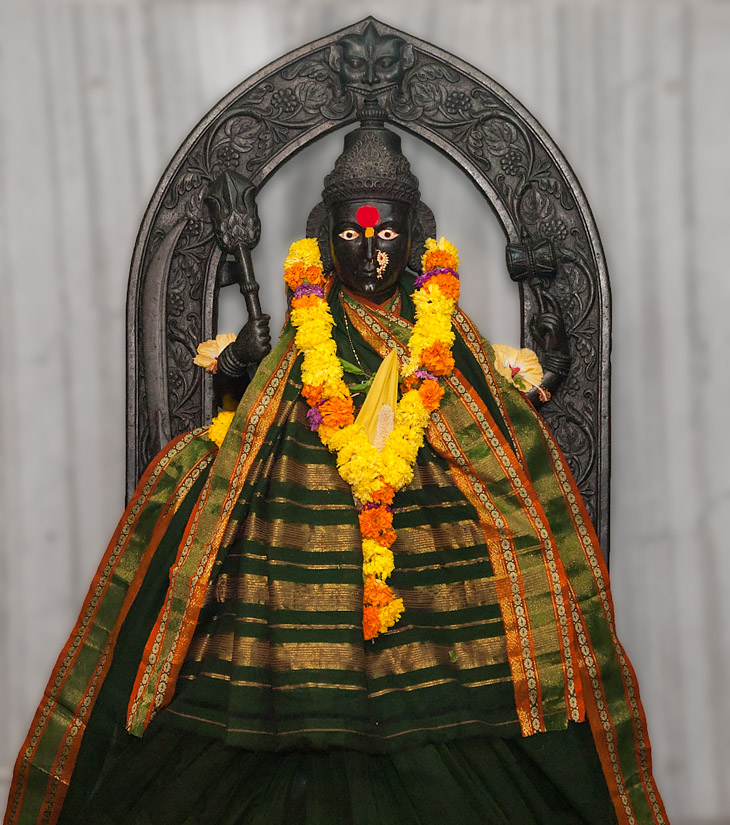
Morjai Devi
5D, 24-105L
Excerpts from the paper The Hindu Past – Sculpture and Architecture by Gritli v. Mitterwallner published in Goa – cultural patterns, Marg Publications, 1983.
“Unlike the basalt stone temples of the Goa Kādamba period, the Hindu sanctuaries of the period of Portuguese rule were either partly built of wood, such as the temple of Betal at Mahalvada in Poinguinim (Canacona) containing the most richly carved wooden ceiling over a maṇdapa, or they were erected entirely in the plentifully available laterite stone. To screen the coarse texture of the laterite from the view of the onlooker, it was whitewashed and decorated with designs in the so-called graffito technique. The method employed in this particular wall decoration actually represents a sort of fresco decoration. First, a red layer of plaster is applied to the coated wall and then a second layer of white plaster is laid upon this. Before the upper layer dries and hardens the pattern has to be scratched out from the top white layer so as to expose the red undersurface. The latter then yields the desired design in red colour standing out brightly against the white background.
The graffito technique, seen in Goan Hindu temples, may have been introduced originally by the Portuguese. It was popular in Italy, for instance, during the Renaissance and is still encountered nowadays in house decorations in Engadin and Bergell (Switzerland) and other parts of Europe.
.
Common to almost all Hindu temples decorated with graffiti are the friezes of suspended heart-shaped pipal leaves which usually serve as frame borders.
.
In summing it up, it can be said that the graffito decorated Hindu temples of Goa form a local idiom which has assimilated foreign elements, transforming them harmoniously into a synthesis of unique character. They represent the most important contribution Goa has made to the regional arts of India.”
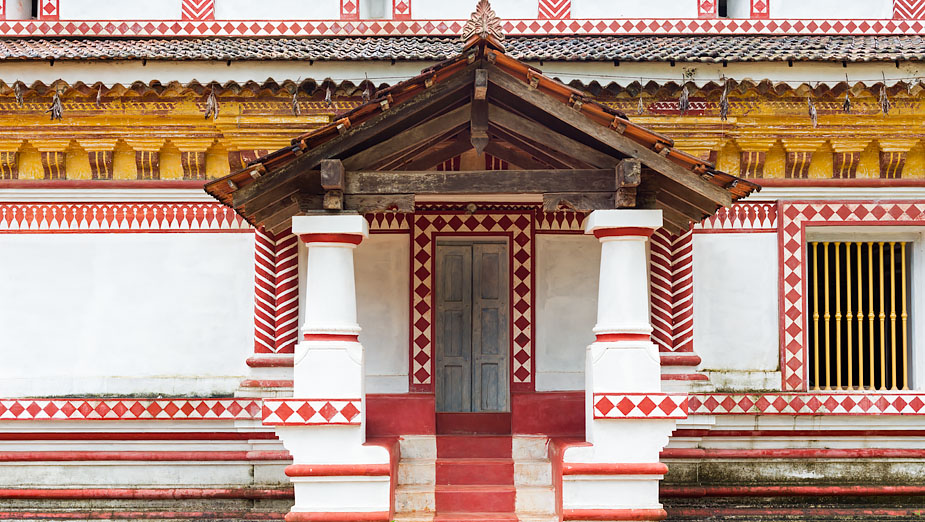
Side entrance
5D Mark III, Zeiss ZE 50 f/2 MP
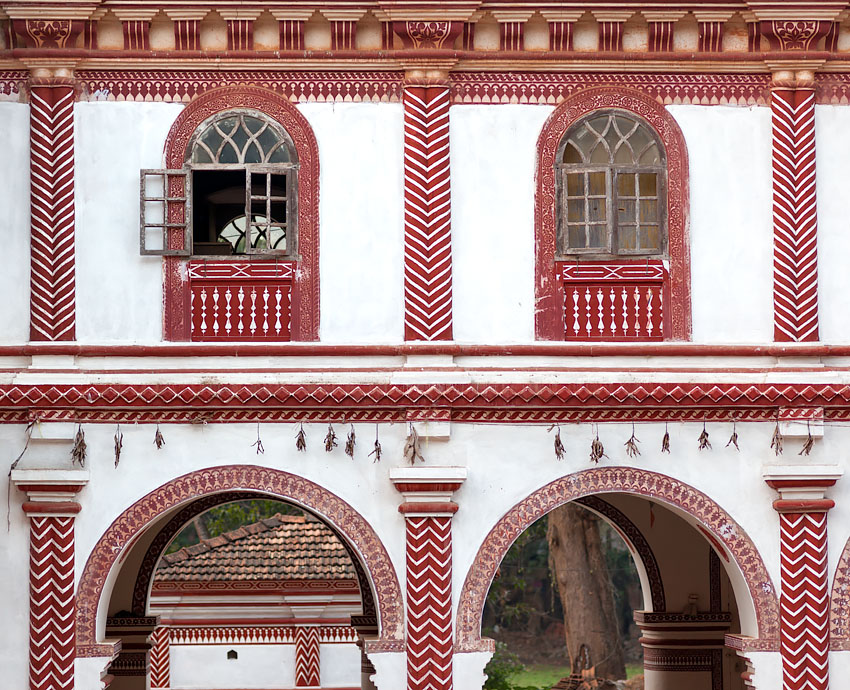
Kaavi art on the façade
5D Mark II, Zeiss ZE 100 f/2 MP
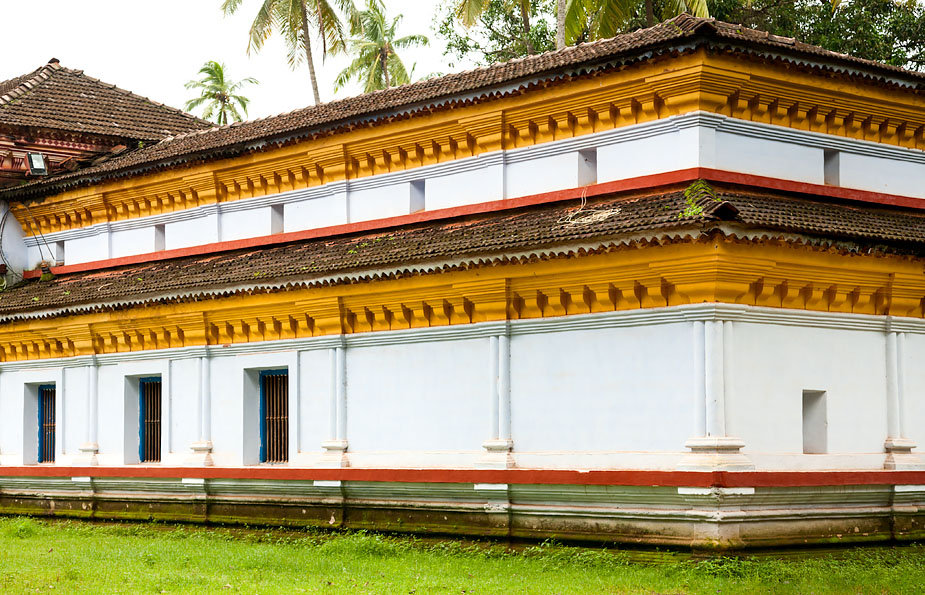
Plinth and corbels of the maṇdapa
5D, 24-105L
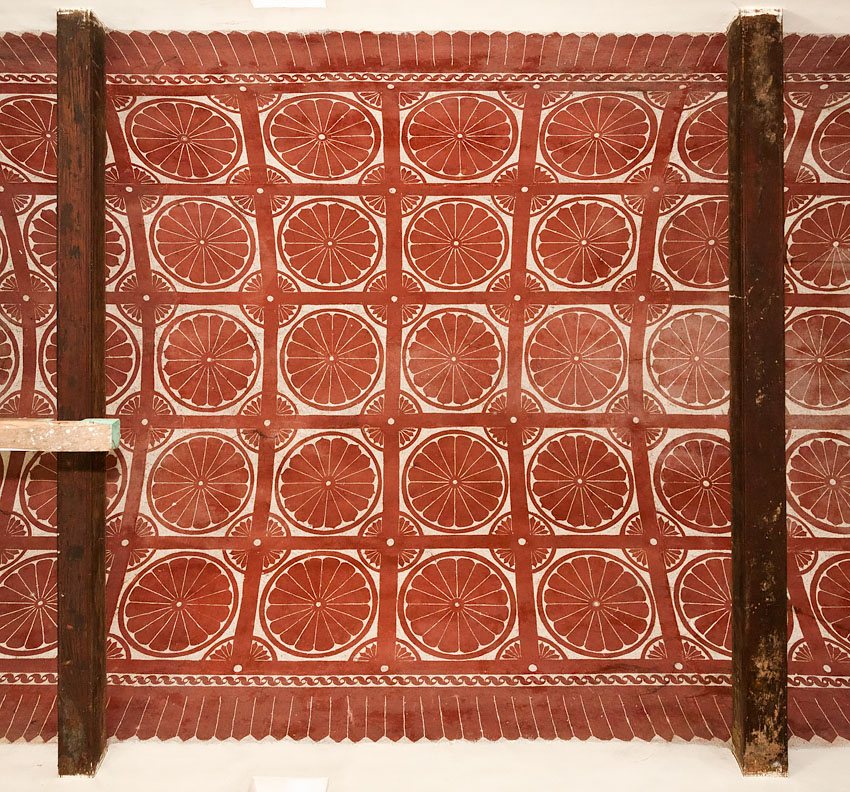
Kaavi art on the ceiling
5D, 24-105L





So far, so good. Goddess Morajai is safe. But Moraji is now transforming rapidly. The kaavi art is consistent with what is seen in Konkan-http://www.kamat.com/kalranga/kaviart/index.htm and needs to be preserved.